Congresso IALHI, Roma 2007
Memorial is the International Historical, Educational, Human Rights and Charitable Society”. Memorial is also the Research Center, Library, Archive and Museum. Memorial is one of the oldest and most reputed non-governmental organizations in the former USSR. It was established at the end of the 1980s as a movement to honour the victims of the totalitarian communist regime. Prominent Soviet-era dissidents, such as Academician Andrei Sakharov, have played a vital role in the shaping of Memorial’s values from the beginning. Nowdays, memorials mission involves the approach to issues of the current day through their relationship with recent history, while on the other, combining this perspective with an assessment of history through the prism of law and human rights. Today Memorial comprises around 90 organizations, 70 in various regions of Russia and some 20 in other countries, for example in Italy and France.
Over the years, Memorial’s branches in different countries and regions have organized scores of exhibitions and published several hundred books on historical aspects of repression (including an index of purge victims, the history of the GULAG and other agencies of repression, acts of repression against ethnic and religious groups, and the memoirs of survivors). Also, Memorial focuses on human rights topics (including monitoring in zones of armed conflict, the state of the penitentiary system, the protection of refugees and forced migrants, and victims of ethnic discrimination).
Thousands of people learned the fate of their relatives who died at the hands of the communist regime through the efforts of Memorial. Thousands of others have been helped to counter today’s arbitrariness.
More information about Memorials activities you may learn from Memorials publications that are available here.
Now, several words about our library and Archive.
In the very first manifesto published by Memorial in 1987, we stated the need to create a “memorial” to the victims of political repressions, that would include an archive, museum and library. The perestroika period, a time of political ferment, of meetings, demonstrations and mass protests, was not a very convenient time for carrying out such scholarly work. Nevertheless, by 1989 the foundations of our Library’s collection had already been laid.
Today our collection includes around 30,000 books and brochures, in Russian, Ukrainian, English, Polish, German, French, Belarusian, Italian and Czech. We have over 200 periodicals (including those published by the second and third waves of Russian emigrants). The Library has one of the largest collections in Russia of documents relating to modern political parties and movements, since 1987 to the present.
The “Memorial” Library’s main holding consists of a collection of books, mainly on the history of the 20th century, with an emphasis on studies of totalitarian regimes, in the USSR and in Central and Eastern Europe. This comprises about 6,000 publications (monographs, reference-books, thematic collections of articles and documents, encyclopedic publications, electronic documents on CD) on the history of mass repressions, the structure of the penal system, various aspects of the operation of the penitentiary system, the history of dissent and of its suppression. The Library also has wide-ranging collections of the following: reference literature, general historical studies, the history of the Russian Empire and the USSR, books on the history of culture, science and the Church, legal studies, human rights publications concerned with the present human rights situation, contemporary ethnology, politics and, literature.
All collections include regional, rare and small-volume publications.
The archives of the Memorial Society began to be developed when the organisation itself came into existence (in 1989), when victims of repressions, or their relatives and friends, started to give members of Memorial documents, photographs and manuscript memoirs from their family archives.
Memorial’s archives consist several thematic collections: The History of Political Repression in the USSR Archive (1918-1956), the History of Dissent Archive (1953-1990), the “Polish Programme” archive (repressions of ethnic Poles and Polish citizens), the Victims of Two Dictatorships (the fate of the “Ostarbeiter” – eastern workers – in Germany and the USSR), the “Man in History: Russia – XX Century” school competition Archive in essay writing about local history, organized by Memorial in Russian Federation. The Memorial archives also include an oral history and biography centre.
As well as collecting and sorting documents, “Memorial” archivists are involved in educational activities, they respond to queries from regional chapters of Memorial, as well as other community and government organisations, and provide research materials to historians and journalists. Of course, we use materials of our archive for our own projects. For instance, the materials for some of the online projects run by Memorial, such as “Women’s Memory of the GULAG”, “Archive studies” and others are provided from the archive.
Visitors are provided with advice and assistance in tracing relatives who were victims of repression, the location of places of execution and burial, as well as assistance in obtaining legal rehabilitation documents and benefits.
The archive’s collections are open to the public and to researchers.
Now I would like to talk in more details about one relatively new project of memorial that I believe is of the particular interest of this audience, the memorials website dedicated to socialist parties.
The idea of this website was brought about when we decided to publicize information about socialists and anarchists who fought the Bolshevik regime and were repressed by it. RIEC Memorial has been collecting this information for many years.
Memorial’s focus on this information might surprise some people. The common public knows Memorial as a purely human rights organization of liberal views. In this case, why should Memorial study socialists and anarchists of the 1920s, their subculture and mentality, and their tragic life experiences?
Why should we study and commemorate the socialists who gave birth to Bolshevism that later built a totalitarian system? The answer to this question is that the left-wing Radical movement gave not only Sergei Nechaev, Vladimir Lenin and Joseph Stalin to Russia and the world but also Pyotr Lavrov, Mikhail Bakunin, Pyotr Kropotkin, Ekaterina Breshko-Breshkovskaya, Georgy Plekhanov, Yuri Martov, Viktor Chernov and many others; not only the “Catechesis of the Revolutionary,” ideas of dictatorship and a group of “social experimenters” but the ideas of the Constituent Assembly and democratic and rule-of-law state that came about from the wish to protect an individual from the power-holding authorities.
Socialists and anarchists were the radical left wing of the country’s political elite – an elite that was almost completely murdered by the Bolshevik regime; an elite whose absence we feel so acutely these days. Russia does not have socialist and social-democratic parties similar to those that are a powerful force in the West and have done a lot for the development of democracy and human rights advocacy. The absence of such parties in Russia is a direct consequence of the indiscriminate slaughter of the Russian left-wing radicals who advocated the ideas and practices of a democratic socialism.
The socialist parties’ struggle against the Bolsheviks after October 1917 should be viewed as the struggle of the civil society against the people who deny its norms and principles in practice.
Our interest in these people has a moral background, too. It is immoral to ignore the heroic deed of people who withstood the Bolsheviks to their end and traveled this road to its end in the literal meaning of the word – to their death in exile, prisons, labor camps and under the shooting teams’ fire. Unlike the hundreds of thousands of the soviet and Bolshevik party officials and millions of non-party citizens who were “guiltlessly” hit by repression in the 1930-1940s, these few thousands of socialists are not just the victims of the soviet regime but its conscious and consistent enemies.
Now we can briefly outline the goals and objectives of our website in the following way:
Restore a more objective picture of the history of our society and eliminate stereotypes.
Give the relatives and any interested person a chance to learn what happened to the repressed “anti-totalitarian left-wingers” and contribute to writing their biographies.
Publish Memorial’s new intellectual products – a Combined List and “Extendable Biographical Notes and Biograms of Socialist and Anarchist Opponents to the Bolshevik Regime” – for the benefit of the academic community. Publish the unpublished documents and materials.
Help the website users (including the beginner researchers who cannot have access to good libraries) to use the republished materials, such as collections of documents, reminiscences, articles, excerpts from books, etc.
We would like the website to be a researchers’ club and a special-focus academic journal besides performing other functions.
Demonstrate, by using extensive materials, that the left-wing views and belief in socialism do not deny democracy, nor do they generate extremist psychology and behavior.
Provide access to reliable and objective information for those who develop the public mind (journalists, political writers, script writers, etc.).
The website will focus on a few closely related vast and complicated topics.
The first is Opposition of Socialists and Anarchists (Socialist Parties and Anarchist Organizations) to the Soviet Regime. However, as we make it the top priority, we should not neglect another topic which has thousands of links with it. We can formulate this second topic as Subculture of a Russian Revolutionary (19-th and 20th Centuries). It also requires very close attention. Two other topics are Life Experiences of the Left-Wing Opponents of the Bolshevik Regime and the Fate of Democratic Socialism and Anarchism in General. All these four topics are intertwined, and it is often impossible to separate one from another.
There is one other topic which is of interest both to Memorial and the public: the actual condition of prisoners in the Czarist prisons, hard labor and exile, and the political prisoners’ fight for the regime before the revolution. Obviously enough, much of the czarist-Russia experience was borrowed into the soviet Cheka operations, work through secret agents, prisons and labor camp, often with the pre-revolutionary staff. The political prisoners’ struggle for the confinement regime consistent with the status of a political prisoner and for their human dignity is based entirely on their pre-revolutionary experience. These issues that Memorial has been historically exploring will have coverage in-depth on our website.
Memorial invites all interested and non-indifferent people to restore the history of life, struggle, mentality and biographies of people many of whom are known to us today only by their name.
We hope that relatives of the repressed socialists and anarchists will help us. We are looking forward to receiving information, reminiscences, letters, documents and photographs from them. We would like to hope that we will build a sound archival wealth of materials about socialists, and historians will use it for writing books and making collections of documents.





